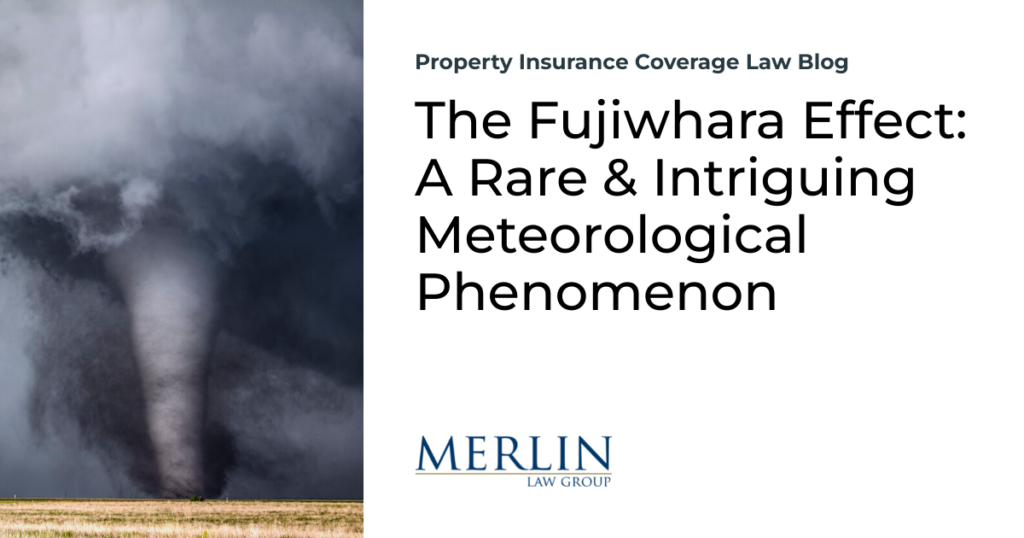The Fujiwhara Effect: A Rare & Intriguing Meteorological Phenomenon

As the new movie “Twisters” is being filmed in downtown Oklahoma City, and some scenes in our building right outside the Merlin entrance, tornados are an appropriate blog topic in the middle of Oklahoma’s typical tornado season. True to form, on April 19, 2023, a series of deadly tornadoes swept through Oklahoma, causing significant damage and loss of life. However, one particular aspect of these storms that gained attention from meteorologists and weather enthusiasts was the potential involvement of the Fujiwhara effect.
The Fujiwhara effect is a phenomenon in which two nearby cyclonic storms rotate around a common center of circulation. This effect can cause the storms to merge, resulting in a more significant and potentially more dangerous storm. This phenomenon was first observed by Sakuhei Fujiwhara, a Japanese meteorologist, in the early 20th century. When the two storms are close enough, their circulation patterns can interact, causing them to rotate around a shared point, almost like a dance.
The result of this interaction can vary, depending on the strength and proximity of the two storms. Sometimes the storms will merge, resulting in a larger and more powerful storm. In other cases, they will repel each other, causing them to move apart and potentially weaken. Nevertheless, it is a rare and fascinating phenomenon that can have significant impacts on weather patterns and storm behavior. An example of this occurred in September 2017 when Hurricane Irma and Hurricane Jose underwent the Fujiwhara effect in the Atlantic Ocean. The two storms began to interact with each other, causing Hurricane Jose to weaken while Hurricane Irma continued on its destructive path, ultimately impacting Florida. Overall, Hurricane Irma caused over $77 billion in damage across the affected regions (approximately $50 billion attributable to damages in Florida), making it one of the costliest hurricanes on record.
In recent years, the Fujiwhara Effect has been the focus of research and concern in areas that are prone to storms, such as Oklahoma. The Oklahoma University College Campus in Norman, Oklahoma, has been particularly affected by this phenomenon, with several severe storms causing significant tornado damage to the campus and surrounding areas. In the case of the April 19, 2023, Oklahoma tornado outbreak, there was some speculation among meteorologists that the Fujiwhara effect may have played a role. Two areas of low pressure had formed over the Southern Plains, one located over western Oklahoma and the other over north-central Texas. Initially, it appeared that these two systems were separate and would not interact. However, as the day progressed, they began moving closer together, with some models suggesting that they could interact and produce a more significant weather event.
Ultimately, it’s difficult to say for certain whether the Fujiwhara effect played a role in the tornado outbreak that occurred on April 19, 2023. Regardless of the specific meteorological factors at play, the tornado outbreak on April 19, 2023, serves as a stark reminder of the destructive power of severe weather. It is important for communities in tornado-prone areas like Oklahoma to be prepared and take steps to minimize the risks associated with these storms, such as having a plan in place for seeking shelter and staying informed of weather updates. Following local storm trackers like KOCO Channel 5’s very own Derik Kline, who also happens to be the owner and founder of Hailtrace, is not a bad idea either. Stay weather aware this season!







